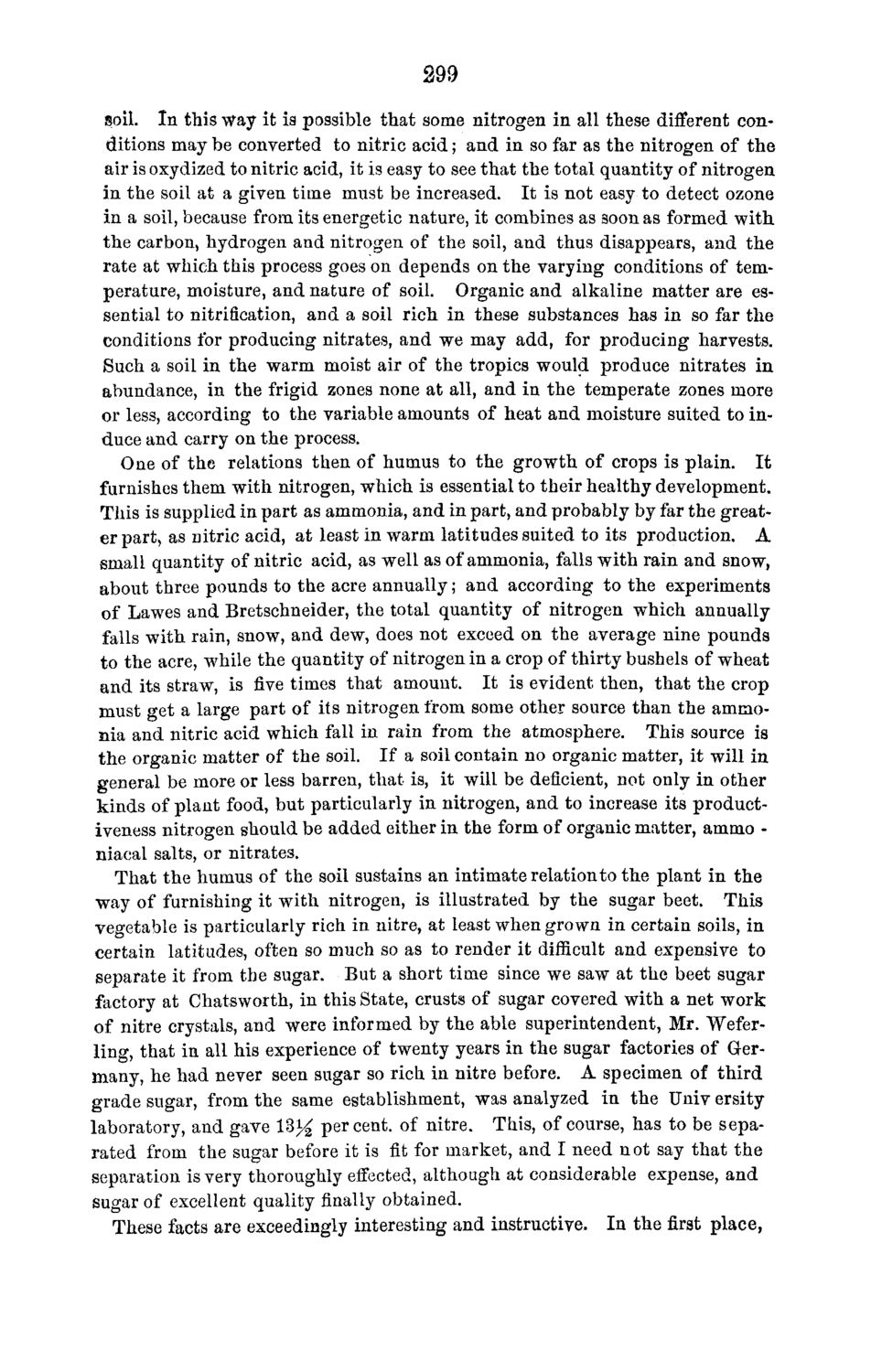| |
| |
Caption: Board of Trustees Minutes - 1870
This is a reduced-resolution page image for fast online browsing.

EXTRACTED TEXT FROM PAGE:
299 soil. I n this way it is possible that some nitrogen in all these different conditions may be converted to nitric acid; and in so far as the nitrogen of t h e air is oxydized to nitric acid, it is easy to see t h a t the total quantity of nitrogen in the soil at a given time must be increased. It is not easy to detect ozone in a soil, because from its energetic nature, it combines as soon as formed with the carbon, hydrogen and nitrogen of the soil, and thus disappears, and the rate at which this process goes on depends on the varying conditions of temperature, moisture, and nature of soil. Organic and alkaline matter are essential to nitrification, and a soil rich in these substances has in so far the conditions for producing nitrates, and we may add, for producing harvests. Such a soil in the warm moist air of the tropics would produce nitrates in abundance, in the frigid zones none at all, and in the temperate zones more or less, according to the variable amounts of heat and moisture suited to induce and carry on the process. One of the relations then of humus to the g r o w t h of crops is plain. I t furnishes them with nitrogen, which is essential to their healthy development. This is supplied in p a r t as ammonia, and in part, and probably by far the greater part, as nitric acid, at least in warm latitudes suited to its production. A small quantity of nitric acid, as well as of ammonia, falls w i t h rain and snow, about three pounds to the acre annually; and according to the experiments of Lawes and Bretschneider, the total quantity of nitrogen which annually falls with rain, snow, and dew, does not exceed on the average nine pounds to the acre, while the quantity of nitrogen in a crop of thirty bushels of wheat and its straw, is five times t h a t amount. I t is evident then, that the crop must get a large part of its nitrogen from some other source than the ammonia and nitric acid which fall in rain from t h e atmosphere. This source is t h e organic matter of the soil. If a soil contain no organic matter, it will in general be more or less barren, that is, it will be deficient, not only in other kinds of plant food, but particularly in nitrogen, and to increase its productiveness nitrogen should be added either in the form of organic matter, ammo niacal salts, or nitrates. T h a t the humus of the soil sustains an intimate relation to the plant in t h e way of furnishing it w i t h nitrogen, is illustrated by the sugar beet. This vegetable is particularly rich in nitre, at least when grown in certain soils, in certain latitudes, often so much so as to render it difficult and expensive to separate it from the sugar. But a short time since we saw at the beet sugar factory at Chatsworth, in this State, crusts of sugar covered with a net work of nitre crystals, and were informed by the able superintendent, Mr. Weferling, that in all his experience of twenty years in the sugar factories of Germany, he had never seen sugar so rich in nitre before. A specimen of t h i r d grade sugar, from the same establishment, was analyzed in the Univ ersity laboratory, and gave 1 3 ^ percent, of nitre. This, of course, has to be separated from the sugar before it is fit for market, and I need n o t say that t h e separation is very thoroughly effected, although at considerable expense, a n d sugar of excellent quality finally obtained. These facts are exceedingly interesting and instructive. I n t h e first place,
| |